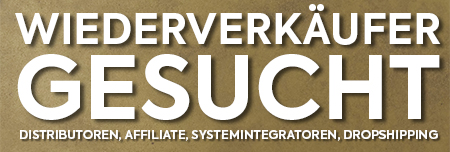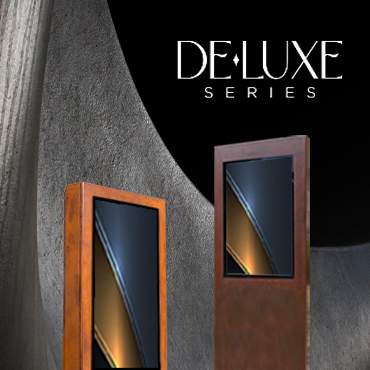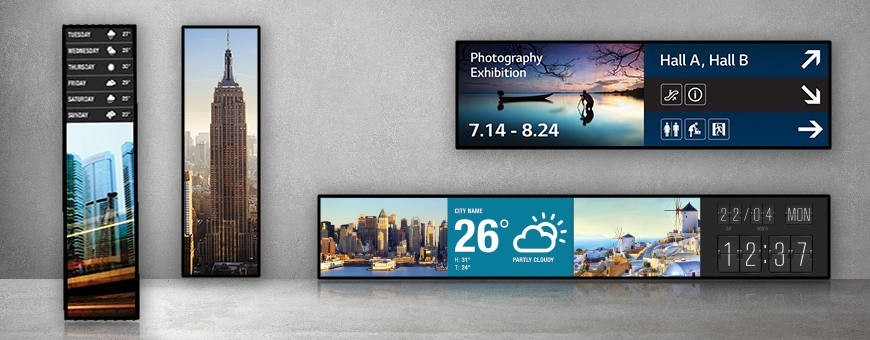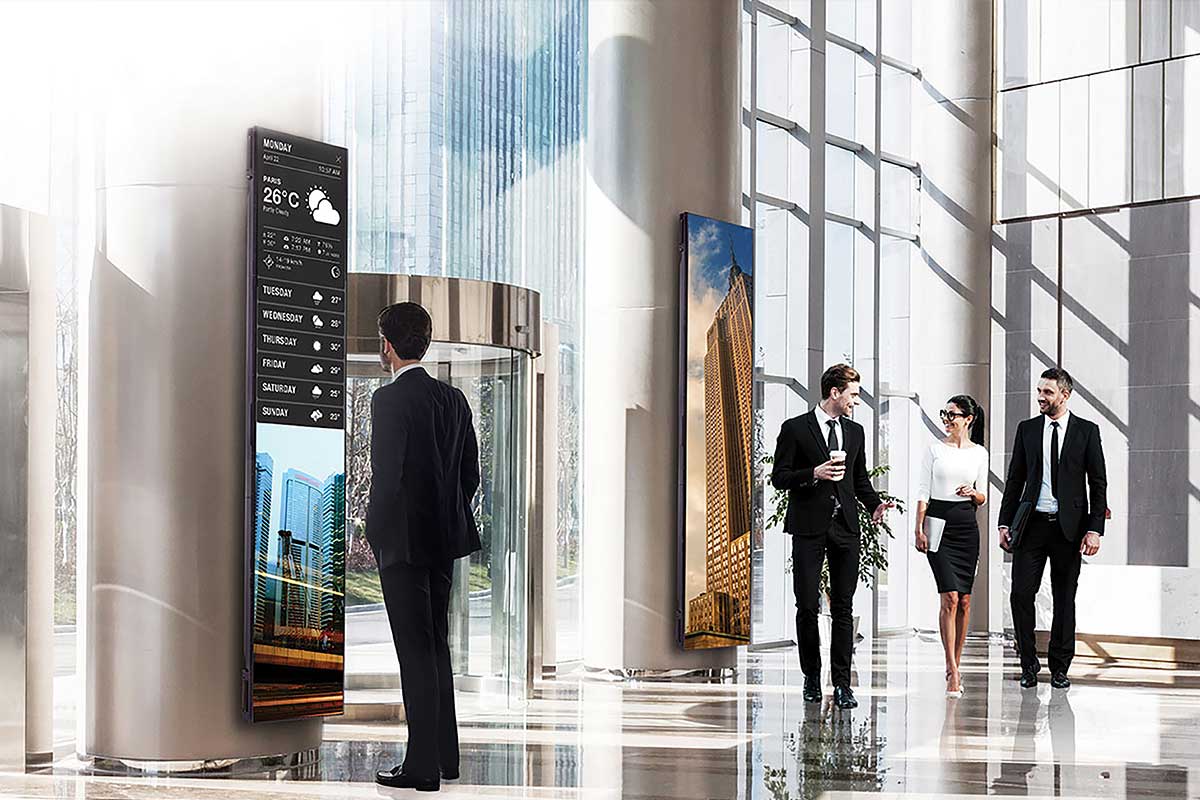Some of the monitor modules contain additional functions such as temperature sensors, photosensors for automatic brightness setting, special tile modes, data playback via a USB port or SD card reader. The technical details that distinguish these screens are impressive, as they are carachterised by a powder-coated surface, which makes them usable even in environments that are not too favorable. Furthermore, the dimensions of the showcase vary from several meters in length and relatively a few centimeters in height, when used in landscape format, or vice versa, if arranged vertically. A thermostated fan, also extremely silent, guarantees the right operating temperature. At the time of purchase, the displays are already equipped with the standard accessories, including a suitable cable for the power supply, the connection cable to the base station or computer and a corresponding remote control. Additional hardware components such as WLAN USB sticks or holders or brackets for mounting display units are vailable as an option.

























